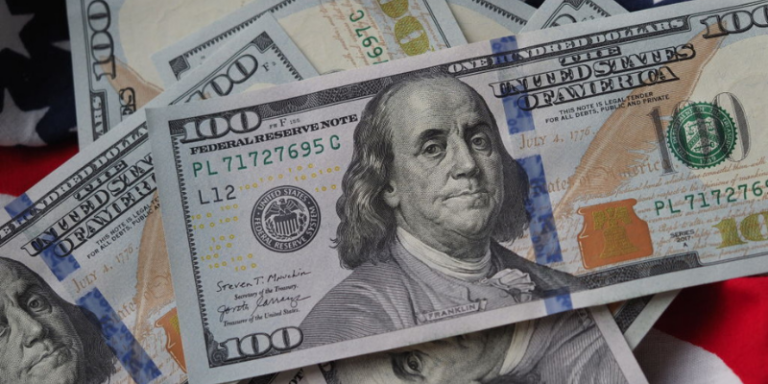Dollars and Cents: How Money is Made
How the US Treasury creates notes and coins.
By: Laura Valkovic | September 26, 2019 | 499 Words

(Photo Illustration by Igor Golovniov/SOPA Images/LightRocket via Getty Images)
Have you ever made money doing chores at home or by setting up a lemonade stand in your neighborhood? Have you earned pocket money, worked a summer job, or paid for items with cash? Most people use money almost every day, but where does it come from?
Money can take the form of cash or electronic information. When someone pays for something with a card or online app, they are moving money directly from one place to another electronically, through a computer. Cash, on the other hand, takes the form of notes and coins. The currency used in the United States is the US dollar.
Who Makes Money?
The US Department of Treasury is in charge of making US currency. Two agencies of the Treasury are responsible for actually creating physical money; the US Mint produces coins and the US Bureau of Engraving and Printing prints paper money. The government hires designers to draw updated versions of coins and notes. These are then stamped onto metal discs to make coins or printed onto special paper to create dollar bills. Security features such as watermarks, serial numbers, specialized designs, and unique inks, are added to make sure that nobody can create counterfeit money, which is illegal.
Although the Treasury produces the physical notes and coins that are cash, it is the Federal Reserve that determines how much money should actually be available in the US economy at any time. The Fed also has methods of changing the value of the US dollar compared to other currencies around the world.

How Notes are Made
The Bureau of Engraving and Printing is in charge of printing dollar bills. Once a design is created, it is engraved onto metal plates. These plates are then coated in ink, and a printing press transfers the design onto paper.
In the US, dollar bills are printed using special black and green inks, as well as color-shifting ink that can change color depending on how it reflects light. Notes are printed on paper that is made from a mixture of 75% cotton and 25% linen. Around the world, paper is becoming less common for printing money – many countries make their notes out of plastic, these days. After printing, the bills are carefully examined for mistakes and imperfections, before being packaged into bundles and sent across the country.
US dollar bills are available in several denominations. Today, you can get notes worth $1, $2, $5, $10, $20, $50, and $100. In the past, larger bills were printed, some worth $10,000, and even $100,000! Today, the $1 and $100 notes are the most common.
How Coins are Made
Coins are produced by the US Mint. Six branches of the Mint are located across the country. As well as coins for use as money, the Mint creates special coins and medals for collecting.
Coins come in six denominations today. These are:
Penny = 1¢
Nickel = 5¢
Dime = 10¢
Quarter = 25¢
Half Dollar = 50¢
Dollar: 100¢, or $1
For more information on how coins are made, check out this video by the US Mint:
















